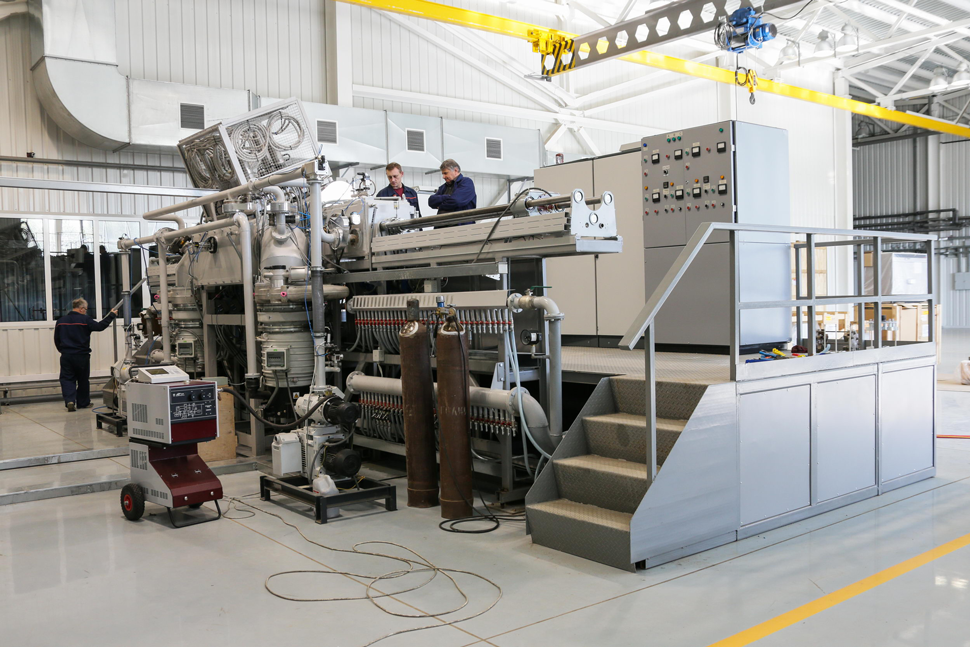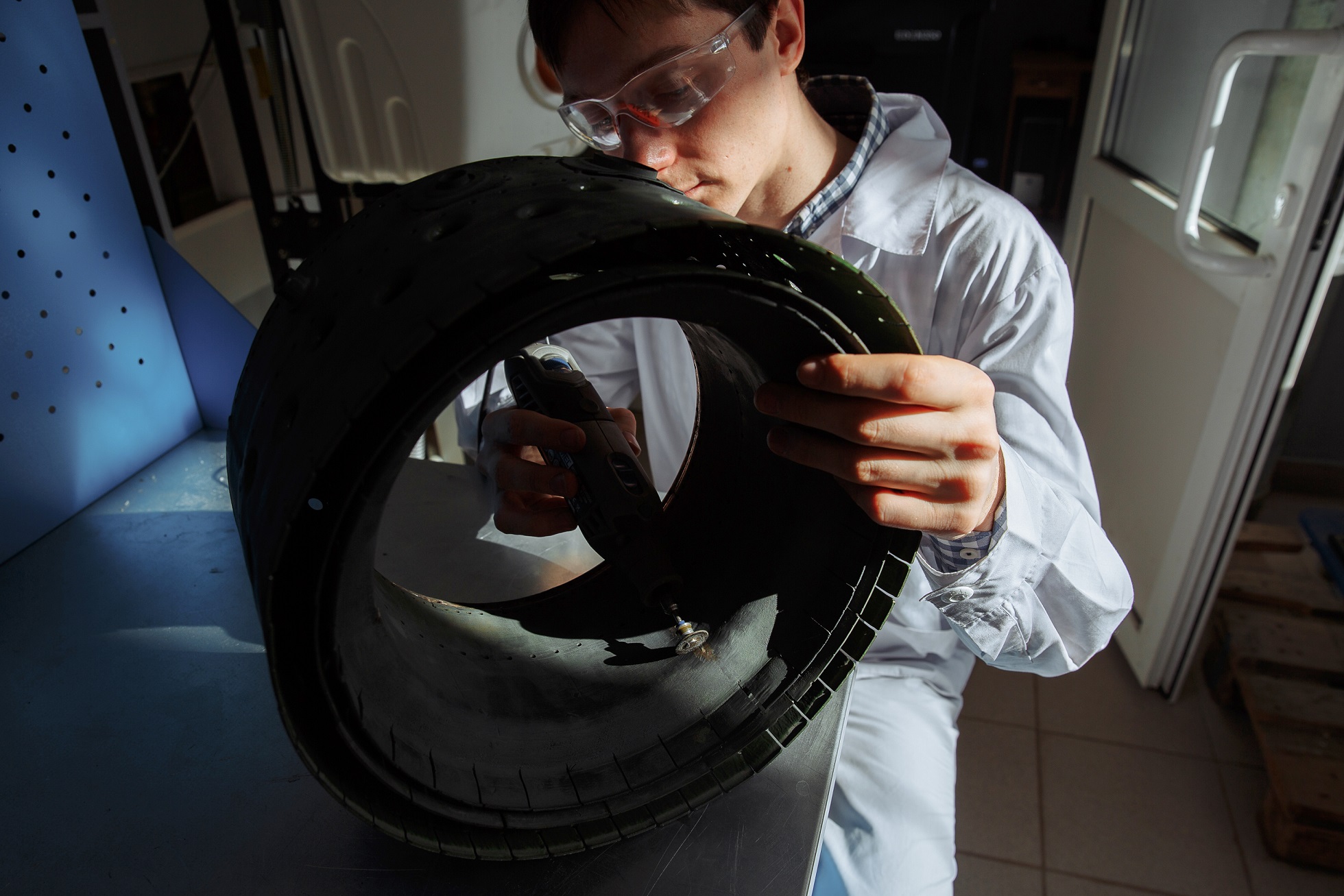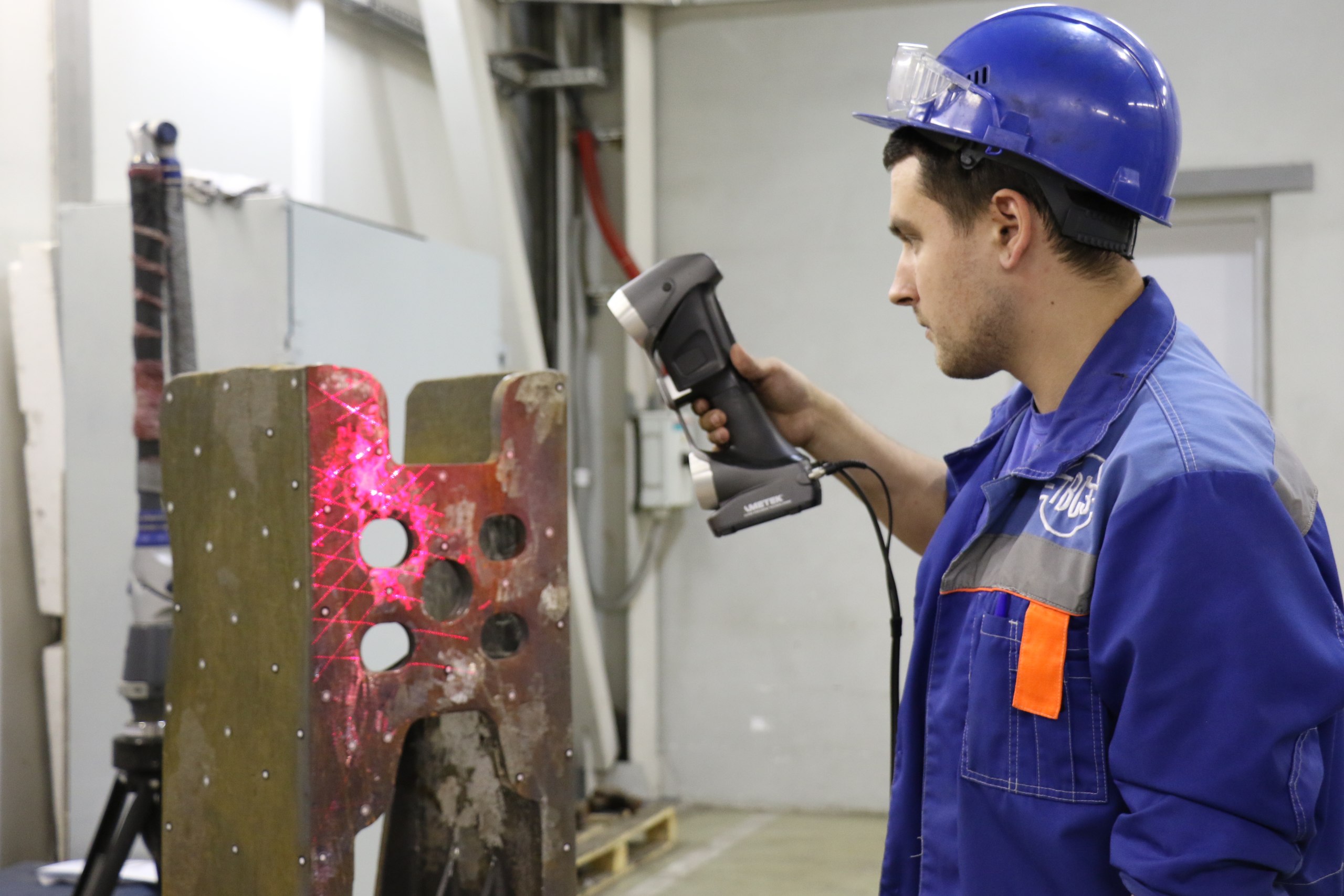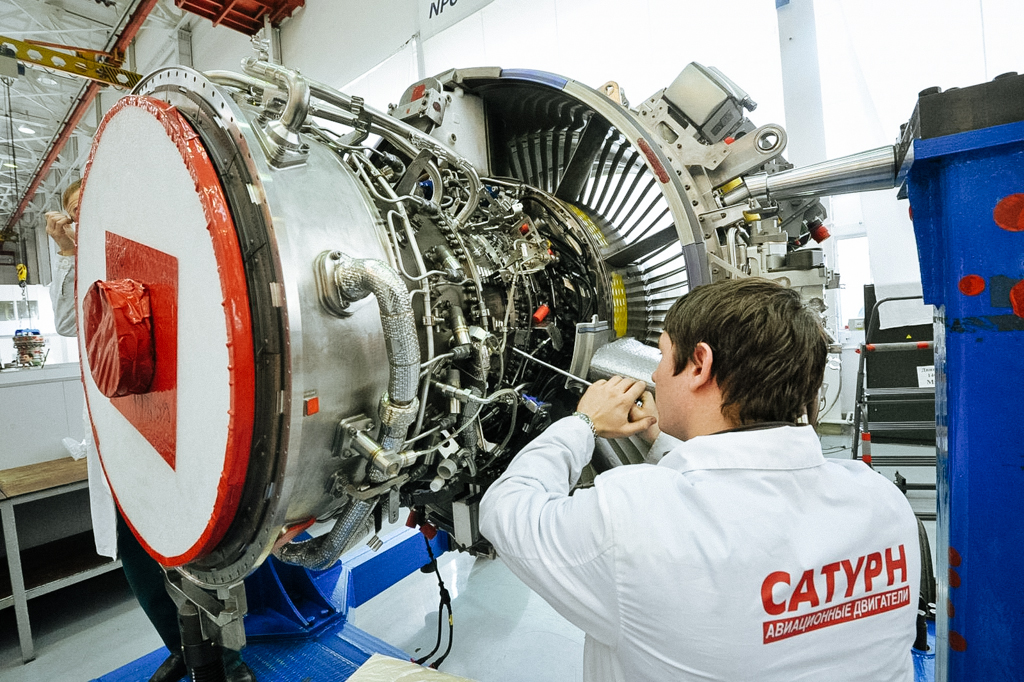9 steps to create an additive center in the enterprise

In 2018, on the territory of the enterprise ODK - Moscow Machine-Building Enterprise named after. V.V. Chernyshev began the creation of a high-tech Center for Additive Technologies / Photo: rostec.ru
Has your manufacturing plant, laboratory, design bureau or scientific research institute already received a general idea of the possibilities of additive technologies and is considering the issue of their implementation? In this article we will describe what factors should be taken into account when organizing an additive technology center in a company, where to start, what technologies to choose based on specific tasks, how to select and train specialists.
First of all:
1. We define industries and types of enterprises where additive technologies will be indispensable
The most promising industries for the introduction of 3D printing are those where the priority is to optimize or create new types of products: aerospace, nuclear, oil and gas, machine building , power engineering, shipbuilding, as well as the automotive industry, architecture, and medicine. In the casting and metalworking industries, 3D printers will be an effective solution for creating casting models, prototypes and tooling.
Three-dimensional scanning and modeling will be used wherever quality control and reverse engineering are performed (see Section 4).
3D technologies are in demand in the following organizations:
- design and experimental bureaus at enterprises that develop new types of products;
- technological centers with pilot production;
- research institutes and centers;
- universities that work directly with manufacturing companies.
2. How to understand if I need 3D technology at all to my enterprise?
Yes, it makes sense to apply innovations where they bring benefits. Before making a decision, it is important to consider:
- There is no universal [additive technology] (https://blog.iqb-tech.ru/3d-printing-technologies) that could solve all production problems with maximum efficiency.
- Every 3D technology has advantages and disadvantages.
- When choosing a 3D printer and / or 3D scanner, you need to proceed from the assigned tasks.
3D printing today does not pretend to replace traditional methods. Additive production is integrated into the existing production process and offers solutions, often inaccessible to traditional technologies, in order to shorten the production cycle and, consequently, significantly save time and costs.
The main point to take into account: 3D printing is only suitable for pilot, experimental or small-scale production. Your company will need it if you have the following goals:
- development and production of a new product with unique properties;
- R & D;
- prototyping, testing, development of technological solutions;
- optimization / modernization of products, possible only by means of additive technologies (complex geometry, [weight reduction] (https://blog.iqb-tech.ru/slm-asco-case), thin walls, internal channels, etc.).
A separate limitation could be the size of the camera building a 3D printer (it depends on the technology and the manufacturer).
If traditional methods provide the desired performance, if you do not need to develop new products, optimize their design and improve product characteristics, it is not practical to organize an additive center.

A center of hybrid additive technologies was created on the basis of the Samara University, where the technology of selective laser fusion with subsequent mechanical, electrochemical and heat treatment is applied. Photo: sgpress.ru
3. We select the technology of 3D printing for specific tasks
The choice of additive technology depends entirely on what you want to get at the output. You will need to consider the following parameters: product size, printing accuracy, strength and durability of the product, purpose (prototype, demonstration model or finished product).
Consider the basic additive technologies and materials used, their main advantages and disadvantages.
| Technology | Consumables | + | - |
SLA (laser stereolithography) | Photopolymers | The highest strength models; one of the best indicators of accuracy; perfect surface finish; the ability to build models of complex shape and structure; speed of 3D printers; large volume of the working chamber (up to 2.4 m); A plastic-grown prototype can be used as a finished product. | Large initial investment; special requirements for the premises and operating conditions; the need for training a technician. |
SLM (Selective Laser Melting) | Metal | Printing end products; high accuracy, density and repeatability of products; ability to print unique complex-profile objects, including the smallest parts and products with internal cavities (size up to 500 mm); weight reduction; material savings (waste is 0.5%); shortened R & D cycle; minimal machining is required, there is no need to use expensive tooling. | The most expensive additive technology; special requirements for the premises and operating conditions; the difficulty in integrating 3D solutions into traditional technological processes; the need for training a technician. |
SLS (Selective Laser Sintering) | Polystyrene, polyamide, nylon, etc. plastics, ceramics, glass, composite materials, sand compositions | Excellent mechanical characteristics of printed models (polyamide is one of the most durable plastics); a wide variety of materials; high print speed; the ability to create products of the most complex forms and textures; large size of the construction camera (up to 1 m); printing both prototypes and final products for nodes and elements. | High cost of equipment and materials; the need to treat rough or porous surfaces of products printed on a 3D printer; special requirements for the premises and operating conditions. |
FDM (method of layer-by-layer deposition of material) | Thermoplastics | The most affordable 3D printing technology; high build speed; ability to print large objects (up to 2 m). | The greatest surface roughness (quality depends on the diameter of the nozzle and consumables); risk of plastic spreading; hypersensitivity to temperature extremes. |
MJP / MJM (multi-jet 3D printing) | Wax | High print speed; maximum detail and accuracy of construction (up to 14 microns); simplicity of operation of additive installations; the possibility of continuous work. | Mostly functional prototyping; expensive consumables; models are vulnerable to sunlight. |
MJP / MJM (multi-jet 3D printing) | Photopolymers | High print speed; variety of model materials with different properties; excellent physical and mechanical properties of finished models and prototypes; simplicity of operation of additive installations. | Mostly functional prototyping; models are vulnerable to sunlight. |
Now you can choose a 3D printing technology for production tasks (you may need several additive installations using different technologies):
- Functional prototyping and testing: SLA, SLS, MJP, FDM.
- Prototyping, production of demonstration samples: SLA, SLS, FDM.
- Ergonomic check, product inspection for collection: SLA, MJP / photopolymer
- Production of plastic end products: SLA, SLS, FDM.
- Manufacturing of finished metal parts of assemblies and assemblies and complex structures (including when there is a task to optimize the product - weight reduction, combining parts from several elements into all-metal, etc.): SLM.
- Creating master models for investment casting, molds for tooling: SLS, MJP / wax.
- Creation of master models for casting according to the burning models: SLA, MJP / photopolymer.
- Fast tooling: SLA, FDM.
- Conducting experiments: SLA, MJP / photopolymer.
4. You will also need a 3D scan.
3D scanner and software for processing the data - the necessary tools for a modern enterprise. 3D scanning can be used at any stage of product lifecycle management, reduces time and costs during the development phase, and speeds up the launch of a product to the market.

Daniil Zhidkov, a razmotchik of the model workshop of the Tikhvin car-building plant, creates a three-dimensional model of the casting using the Creaform HandySCAN 3D 3D scanner. This portable 3D scanner allows you to create a model of the part when there are no dimensions and drawings at hand, which greatly facilitates the work of designers / Photo: tvsz.ru
With the help of 3D-scanner and specialized software you can much more effectively solve the following tasks:
- control of product geometry and equipment, input and output control;
- reverse engineering for upgrading, repairing, restoring parts;
- getting a CAD model.
3D scanning devices provide accuracy in the range of 20-50 microns per meter. If these accuracy parameters do not suit you, continue to use the coordinate measuring machines. However, in terms of measurement speed, portability and cost, 3D scanners leave CMM far behind.
5. Planning a budget
Prices for additive installations range from one and a half thousand euros (FDM) to several million euros (SLM), for 3D-scanners - from 20 to 130 thousand euros.
The final cost of the printer depends on the chosen hardware configuration and many other factors, therefore it is difficult to identify the numbers at the initial stage of the additive center organization. In addition, you need to take into account the associated costs ( materials for 3D printing , additional equipment, power consumption, etc.).
6. Check how 3D technologies work before purchasing equipment
Want to pre-check the solution to your problems? In the iQB Technologies Rapid Prototyping Center you can order 3D-printing test services using wax, photopolymers and gypsum, as well as 3D-scanning and 3D-modeling. Departure of experts with the portable 3D-scanner on the enterprises across all Russia is possible.
7. Optional equipment
Depending on the type of additive plant, additional equipment may be required. For example, for SLA printers you need a UV camera, where the finished product is confirmed. The most complex equipment - metal 3D-printers , which require:
- muffle furnace to relieve residual metal stress;
- Dremel, band saw or EDM machine for removing supports;
- shot blasting or sandblasting chamber for post-processing products and improving surface quality.
After the selection of 3D-printers with our experts, you can navigate what additional equipment is needed.
8. Special Requirements for Using 3D Printers
The premises and operating conditions may have special requirements, for example, the supply of the required amount of electricity and air conditioning. The most stringent requirements relate to the installation of 3D-printing with metals - it is necessary to observe safety precautions (to ensure tightness when operating the machine, to work in protective clothing) due to the danger of metal powders that are sintered in inert gas.
Let us give an example of the standard requirements for a metal 3D printer:
- Voltage 3 phases 380 V, operating mode consumption 7 kW, at a peak of up to 12 kW;
- supply of inert gas to the machine (3-5 cylinders);
- air conditioning in the room (from 18 to 23 ° C), optimally - in the mode of air drying;
- a compressor or a line with a supply of compressed air 4 atmospheres;
- technical water for washing filters and products.

The ODK-Saturn enterprise in Rybinsk, part of the United Engine Corporation, is actively using additive technologies in the production process of gas turbine engines / Photo: rostec.ru
9. We prepare specialists of additive technology center.
The staff of the additive laboratory is the designer and operator of the 3D printer, their number depends on the equipment and the amount of work. If for professional 3D printing installations one operator is enough, then for industrial (SLA, SLS, SLM) you will need at least two trained specialists, since the cost of downtime of such equipment is very high.
Optimally, if the operator and designer are different people. The designer designs products for additive production in specialized software and understands how to apply the appropriate methods, and the operator is rather a technologist, he embodies the designer's vision in the finished product. At the same time, the operator of a 3D printer should be a creative person, a specialist with a higher technical education who loves to learn and is passionate about innovation. High quality printing can be achieved by correctly selecting the printer settings. This can be quite a challenge: in SLM machines, for example, 170 open parameters that can be changed during the build process.
In our training center you can be trained to work on industrial 3D-printers for 3-4 days. Also available are training programs on 3D scanning and basic software products for processing scanned data (Geomagic Control X / Design X / Wrap ) and preparing models for printing ( Materialize Magics ). There are also advanced comprehensive programs for up to 12 days.
Conclusion
We hope that this article will help you decide on the choice of 3D technologies and take further steps to create an additive laboratory.
We found that 3D printing is only suitable for experienced, experimental or small-scale production, mainly in high-tech industries. Additive technologies will allow to optimize the production process when developing new types of products or improving the current range, creating prototypes and tooling. 3D scanning makes it possible to reduce time and costs during the development phase when performing quality control and reverse engineering tasks.
')
Source: https://habr.com/ru/post/448678/
All Articles